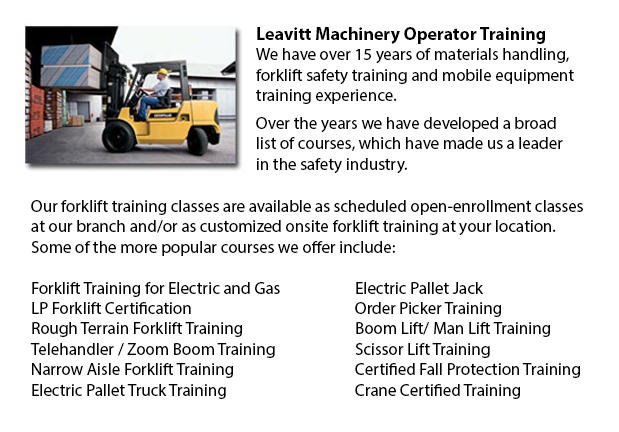
Hyster is globally renowned as an industry leader in the forklift manufacturing business. However, it began as a producer of lifting machinery as well as winches. Most of its production was concentrated in the Pacific Northwest and dealt primarily with the wood and logging industry. A couple years after the 1st forklift trucks were invented Hyster became synonymous with quality manufacturing. Over the preceding 80 years Hyster has continued to get bigger and develop its product line. The expansion of its products coupled with its wish to stay service oriented has allowed Hyster to develop into the global player it is at present.
Through the 3 decades between the 1940's and 1960's, Hyster made substantial strides on its path to becoming the international leader in the forklift industry it is at the moment. In 1946, Hyster opened a plant in Danville, Illinois that was fully committed to bulk producing trucks. This allowed Hyster to force its costs down and, simultaneously, offer a better quality product at industry aggressive rates. In 1952, Hyster began its first foray in to the international production market through opening its first plant in the Netherlands. The Netherlands plant was originally designed to produce two products: Hyster 40" and the Karry Kranes.
Between the late 1950's through the 60's, Hyster continued to expand into new markets. They started constructing container handlers in the United states in 1959 to meet with the ever growing demand for transportation goods. In 1966, Hyster developed a technique for allowing a lift truck to go both forward and backwards using the same pedal. This pedal was referred to as the Monotrol pedal, which revolutionized the industry. Later on in the decade Hyster opened a research and development centre in Oregon that was concentrated on improving the design and functionality of forklifts. The centre is still one of the world's best testing facilities in the materials handling industry.
As demand for materials handling equipment continued to expand rapidly during the 60's, Hyster considered it necessary to reorient its concentration towards these new mass markets. Thus, in 1970, the XL design philosophy was born. The XL design philosophy allowed Hyster to afford superior quality at a more affordable price. A further expansion in manufacturing capabilities was necessitated by the demand in Europe for Internal Combustion Engine Trucks. To fill this gap, a plant in Craigavon, Ireland was opened in 1980. Through the 80's Hyster continued to focus on developing industry leading lift trucks. The Hyster company name was recognized throughout the globe for its dedication towards excellence. This attention to quality produced numerous suitors for the business. In 1989, a large international corporation based in Ohio called NACCO Industries bought Hyster and started an aggressive expansion strategy. NACCO rapidly replaced the XL philosophy with a more driver oriented truck that concentrated on operator comfort, which is recognized as the XM generation of lift trucks.
With the global change towards just-in-time management methods, Hyster has been required to keep up with the trends through investment in new and diverse technologies. Acquisitions and investments were made in the US, Italy, Netherlands, and a lot of other places all over the globe. All of these investments have made Hyster a worldwide leader in the forklift market. In 2009, Hyster celebrated its eightieth anniversary as an industry leader of materials handling equipment, which comprises more than 300 different types of forklift trucks.
-
Toyota Forklift
Ever since 1992, Toyota Material Handling inc., U.S.A., also referred to as TMHU, have been the top selling lift truck provider in the United States. This company has been based out of Irvine, California for well over 40 years, providing a comprehens... More -
Nissan Forklift
Nissan Motor Co. Ltd prides itself on achieving total consumer fulfillment when enjoying one of their car, truck or forklift products. They are fully committed to delivering high value and meticulous quality values to their customers. Incorporating a... More -
Terex Forklift
Terex Forklifts takes great pleasure in producing quality equipment that helps improve their customers' efficiency while standing by their mission to provide a cost effective yet consistent product line. Through several divestures and acquisitions de... More -
Genie Forklift
Genie is a globally established corporation that enjoys the spirit of partnership with their extensive network of allied consumers. Genie Industries prides itself on the image of bringing materials and people higher and extending beyond the products... More -
Doosan Forklift
Doosan Infracore Company Ltd. is an international company consisting of Diesel Engines, Defense Industry goods, Industrial Vehicles, Construction Technologies and Machine Instruments and Mechanization Systems. Their United States partner, Doosan... More

Forklift Training Edmonton
crossorigin="anonymous">
TOLL FREE: 1-888-254-6157
Edmonton, Alberta
forklifttrainingedmonton.com
Email Us
About Us


